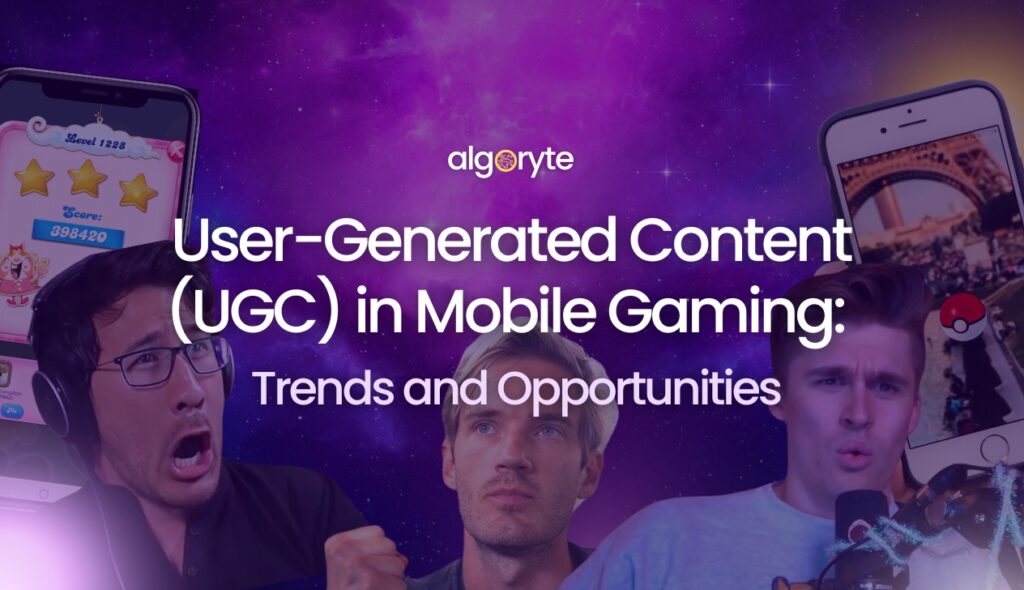
User-Generated Content (UGC) in Mobile Gaming: Trends and Opportunities
Let’s face it, traditional mobile game ads are getting stale. Players scroll past them like yesterday’s news. But there’s one format still breaking through the noise, grabbing attention, and driving downloads: user-generated content (UGC).
Yet, here’s the kicker despite its rising popularity, most game developers aren’t using it effectively.
If you’re not leveraging UGC for your mobile games, you’re leaving major growth on the table.
In this complete guide, we’ll show you exactly why UGC works, how it’s transforming mobile game advertising, and how to build scroll-stopping, download-driving campaigns that actually convert.
What exactly is UGC in Mobile Game Advertising?
We’re not talking about casual selfies or random gameplay clips here.
In the mobile gaming world, UGC is a powerful ad format that mimics authentic, real-player content but it’s paid, purposeful, and highly strategic.
Think:
- A creator doing a gameplay review.
- A sketch showing a funny moment in the game.
- A reaction video sharing their in-game progress.
These ads feel organic, not salesy. And that’s why they work.
Why Players are Taking Control
At the heart of user generated content mobile games is empowerment. Players crave agency, creativity, and freedom and UGC in mobile gaming delivers that. Games like Roblox and Minecraft paved the way, but now we’re seeing mobile games with user generated content dominate the charts and community forums alike.
This shift isn’t just fun, it’s smart. Developers are tapping into user content gaming trends to build communities that don’t just play, they participate. Instead of pushing updates from the top down, they’re inviting players to co-create the worlds they love.
Real Examples: How Top Games Are Winning with UGC
Monopoly GO
Scopely nailed relatability with a side-by-side video. On one side? A millennial guy talking about how Monopoly GO revives childhood nostalgia. On the other hand? Actual gameplay. The combo? Pure engagement.
Royal Match
This one’s clever: a casual gamer raves about how the game has no annoying ads while playing its mini-games. It’s UGC meets trend-jacking targeting both the player’s frustrations and curiosity.
Toon Blast
Bringing in a recognizable face like Justin Guarini? Smart. His unscripted, low-effort “Cameo-style” plug makes the game feel cool and casual, no hard sell needed.
Dragon City
This ad showcases a young woman customizing her dragon. It’s not even real gameplay but it feels authentic. That relatability? It’s what hooks viewers.
My Talking Angela 2
Set in a cozy bedroom, the video shows a young woman playing and styling Angela. It hits home with their target audience by reflecting their space and interests.
Why UGC Works: The Psychology Behind the Clicks
It Feels Real
When content doesn’t scream “ad,” players actually pay attention. UGC doesn’t just look native it builds trust through relatability.
Social Proof = More Installs
Humans follow the crowd. When players see others loving your game, FOMO kicks in. That’s how UGC drives downloads through authenticity, not pressure.
It’s Budget-Friendly (with Better ROI)
UGC ads are cheaper to produce and often outperform polished, high-budget campaigns. That means lower acquisition costs and higher returns.
It’s Engaging by Nature
Data shows UGC ads can 4x your click-through rates and reduce cost-per-click by 50%. And if you combine UGC with pro visuals? Engagement can rise by up to 28%.
It Can Go Viral
That “I saw this game on TikTok” moment? That’s UGC in action. It’s built to blend in with social feeds and stand out in the process.
How to Launch a Killer UGC Campaign for Your Game
Ready to put this strategy into action? Follow this 5-step roadmap:
1. Concept First, Script Second
Come up with a concept players can connect with. Think testimonials, funny sketches, or story-driven moments.
Write a flexible script — or let creators improvise around clear objectives.
2. Hire the Right Creators
Match your game’s audience.
Example: If your mobile game targets women 30+, find a creator who fits the same mold.
Try platforms like Influee, Billo, or even Cameo for celebrity-style videos.
3. Get Versatile Footage
Ask creators for both direct-to-camera content and b-roll.
Why? More footage = more variations = better A/B testing.
Bonus tip: mix in actual gameplay for context and clarity.
4. Launch Ads Across Platforms
Use multiple versions of your UGC ads across networks like Facebook, Instagram, TikTok, and Unity Ads.
Start small, test wide. Let performance data guide your budget.
5. Iterate Ruthlessly
The best-performing ads usually come from constant iteration.
Tweak formats, swap hooks, highlight different game mechanics and keep optimizing for ROAS.
Final Thoughts: Why You Can’t Ignore UGC in 2025
UGC isn’t just a trend — it’s the future of mobile game advertising.
From higher engagement to stronger ROIs, it’s the one strategy even small studios can use to compete with giants.
So whether you’re a new game design studio, an indie dev, or an established mobile game developer, now’s the time to build your UGC playbook.
Need help crafting a UGC campaign that converts? We create results-driven user-generated content ads for mobile games and we’d love to help you grow.
👉 Let’s talk about your game.
About Algoryte
At Algoryte, we’re more than a Software development company — we’re innovators, creators, and problem-solvers.
- At Algoryte, we’re not just providing game development services.
- Explore our other services: VR/AR/, Web3, and blockchain innovation
- Curious to see more of our work? Dive into : Yetiverse | Landverse
- Stay connected with us on X | LinkedIn | Instagram
- Discover more content at Algoryte.com | Substack | Medium






One Response